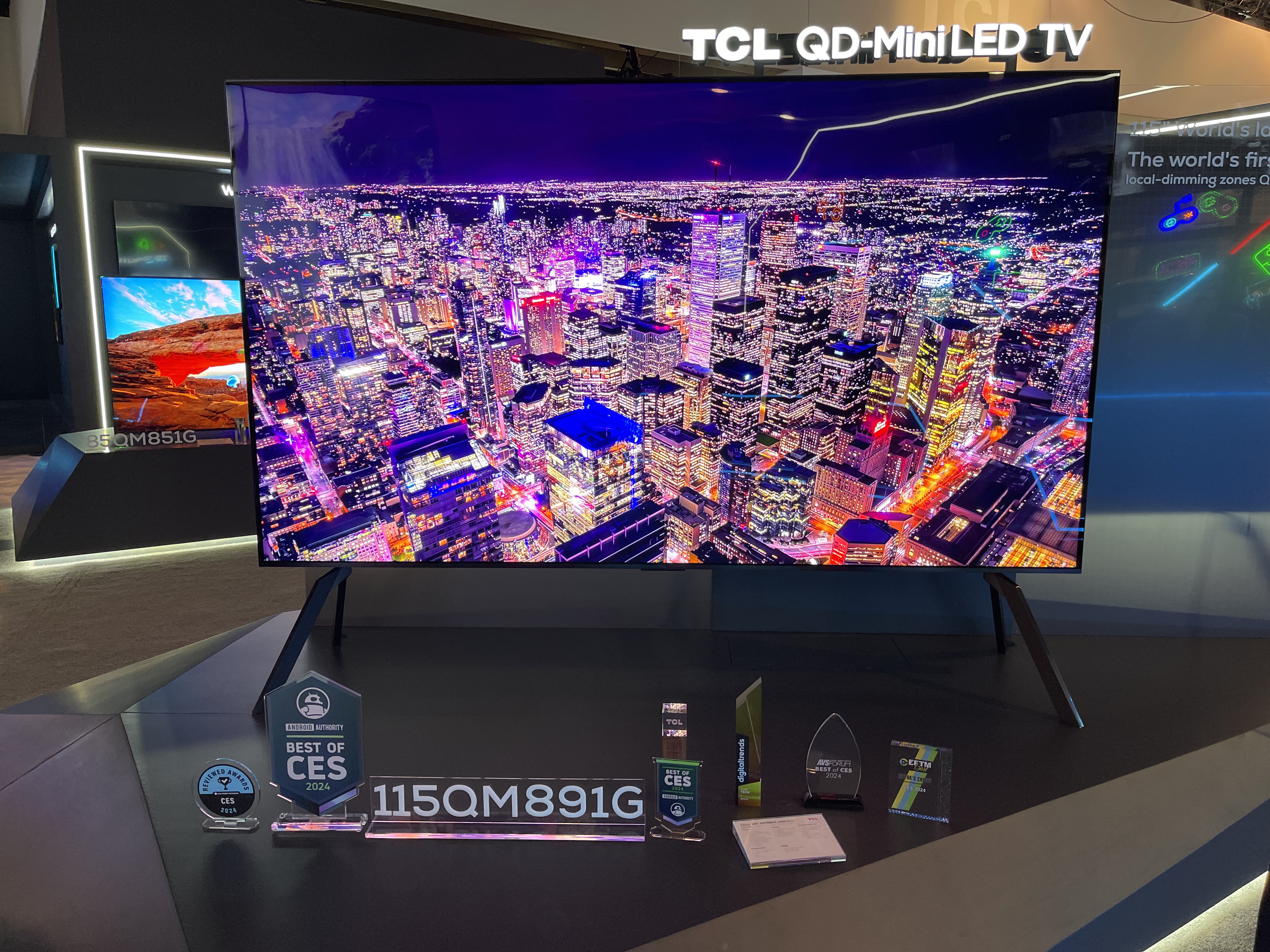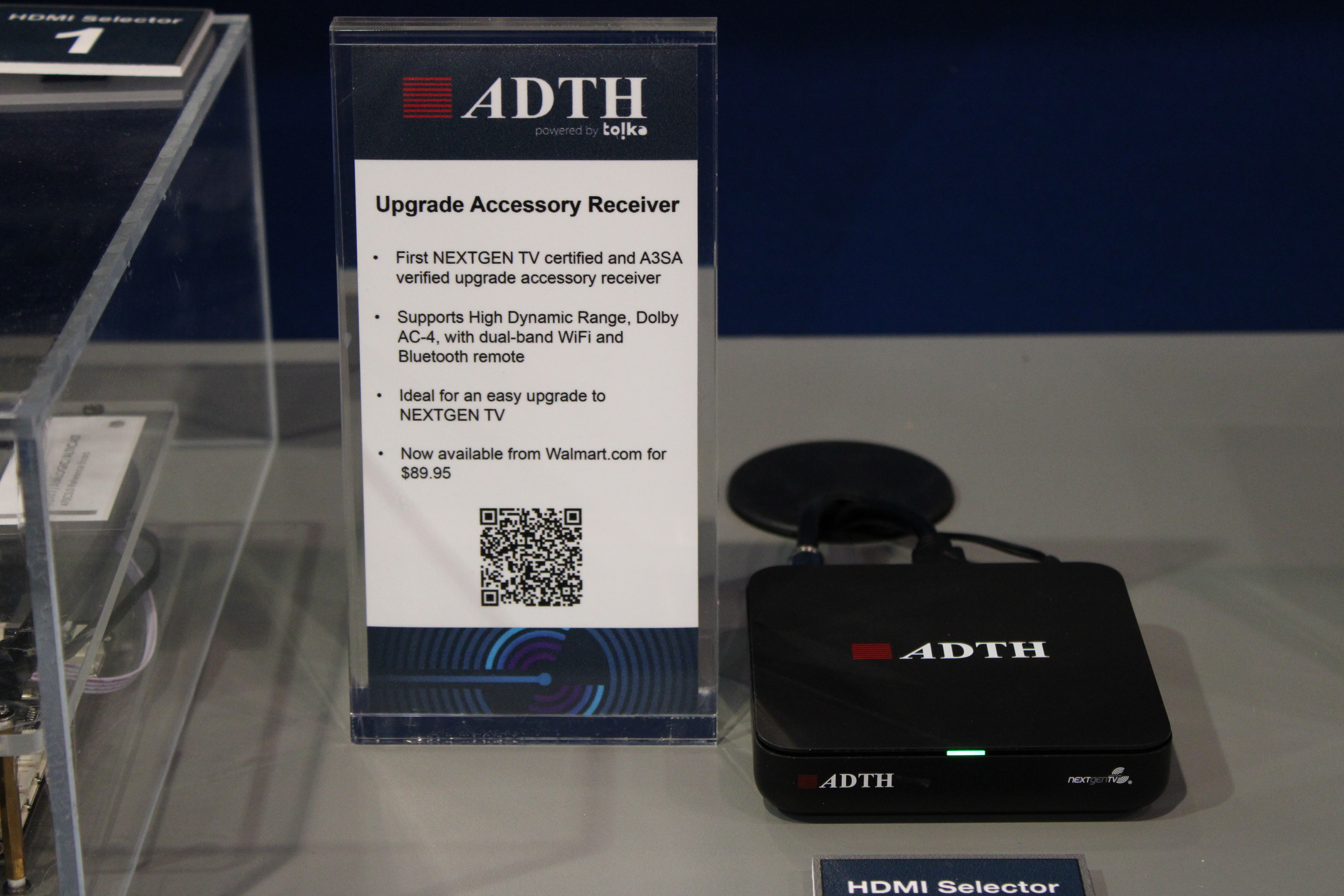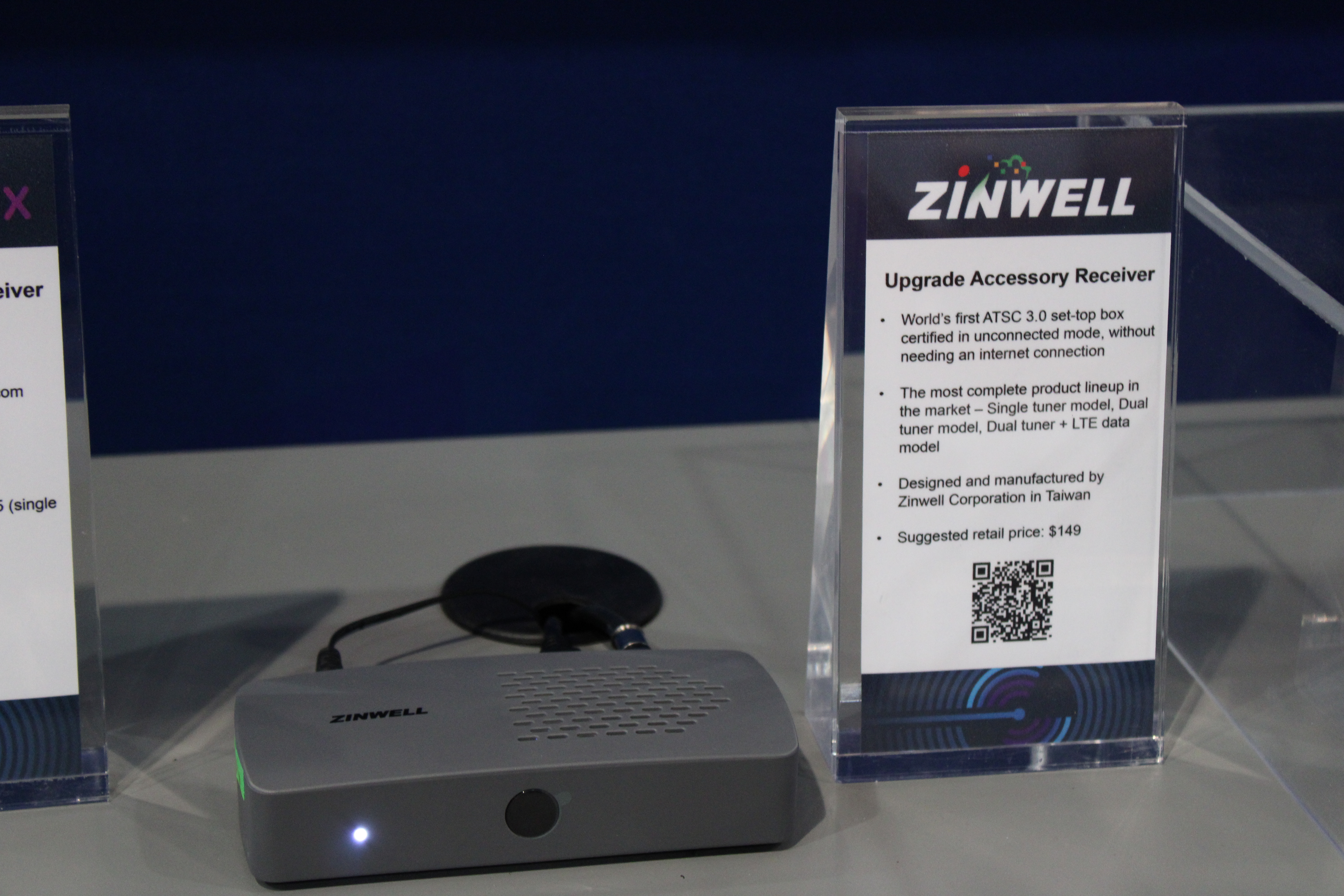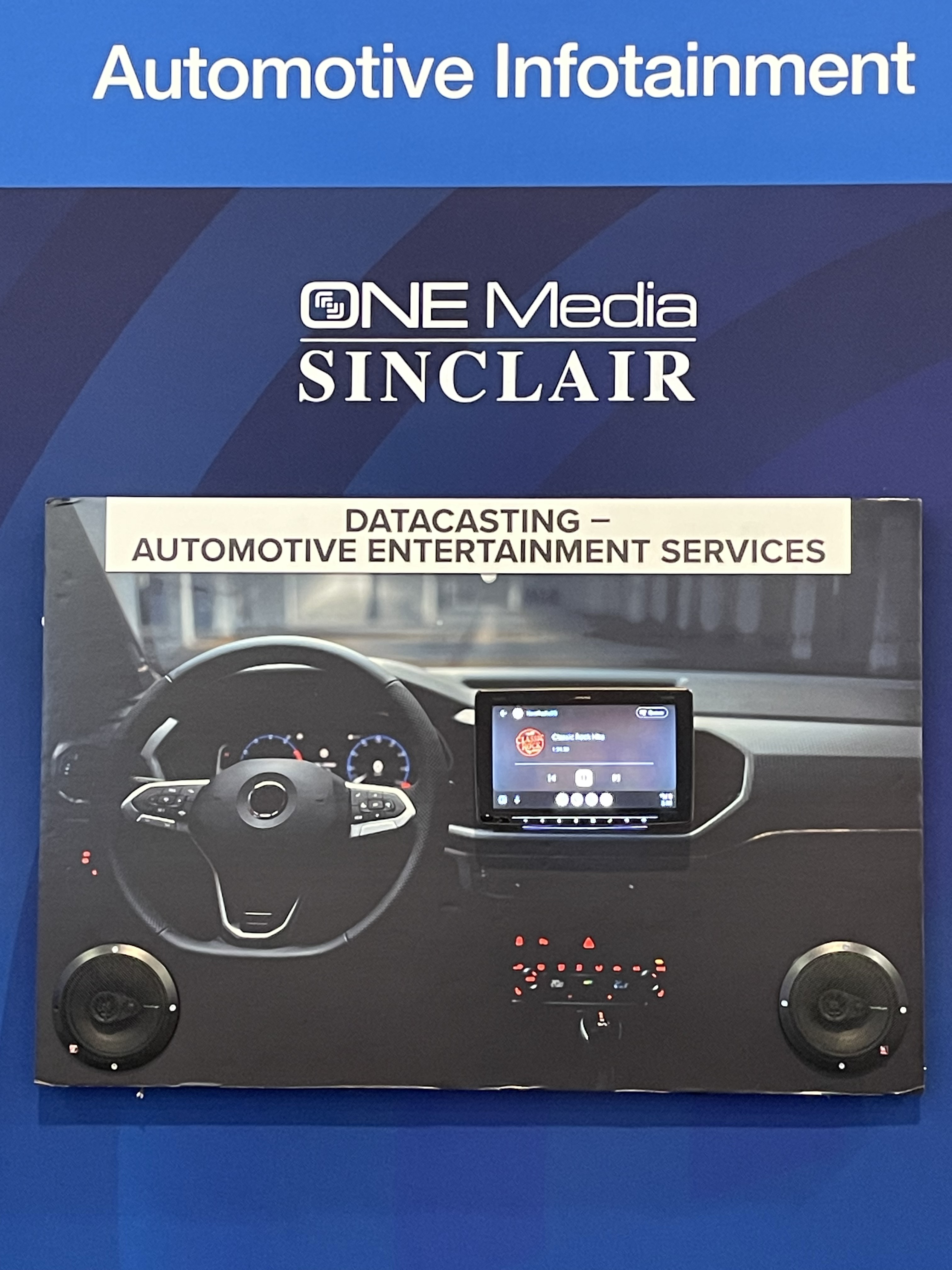
I’ve been attending and writing about CES for about 25 years. Think back to what changes were taking place in the television industry and media in general back then: High definition video was in its infancy, there were no smart devices with 4K or better screens, the internet was used for email and still images mostly delivered over a dial-up modem and over-the-air digital television was just starting to roll out. Wandering around CES in those days finding companies touting their ATSC or DTV solutions and displays was easy.
Going to CES this year with a focus on ATSC 3.0/NextGen TV presented a different challenge in that with the exception of the ATSC booth in the Central Hall of the Las Vegas Convention Center (LVCC), the only written reference I could find on the exhibit floor was on a few of the information cards near displays. I was pleased that when I asked staff at most of the larger manufacturers whether their television displays included a NextGen TV tuner, there wasn’t that “deer in the headlights” look I have experienced in prior years. They knew what I was asking them about and if they didn’t know for sure if the display had a NextGen TV tuner, they found out from someone in the booth.
TV Sets
I am pleased to say that most manufacturers I asked do have NextGen TV tuners in some of their new models and a couple have them in all models. The obvious notable exception was LG, which has “paused” on the rollout of NextGen TV while the patent infringement lawsuit goes through the appeals process. That’s not to say that LG didn’t have any televisions on display, they just couldn’t talk about tuners within the sets. LG’s primary focus in display technology was on 4K wireless transparent OLED displays.
The notable manufacturer aberration was the complete lack of any new displays at the Sony booth. Sony is one of the manufacturers that made the decision to put NextGen TV tuners in all new model sets, so it was somewhat concerning that they didn’t have anything set up. Conversations with booth personnel revealed that Sony is planning a standalone display exhibition in the Los Angeles area, primarily for the film and television studios. This is good news as I was hoping to see their A95 series which many of my colleagues in the media are giving high marks.

The big news from display manufacturers is that TCL will be incorporating NextGen TV tuners in their new lines of sets beginning this year. They will begin initially with their high-end models and eventually all models will incorporate NextGen TV tuners. I was pleased to hear this as my colleague Merrill Weiss and I spent a considerable amount of time looking at the TCL 115QM891G, a 115-inch MiniLED TV which according to the booth personnel will be available in the spring and priced at under $20,000.
The story on NextGen TV tuners was the same at Samsung, Hisense and most other manufacturers: The tuners are initially being introduced in their premium line sets first. I was told by several manufacturers’ representatives at the show that the primary reason for this is not a lack of belief in NextGen TV, but the extraordinarily low profit margins on smaller, more affordable televisions, (I say “smaller” because after looking at sets up to 163 inches, a 65-inch display just doesn’t seem all that big and when you can buy a good one for as little as $400 you can understand why the manufacturers are counting every penny when it comes to production).
Catching up with Madeleine
I caught up with ATSC President Madeleine Noland at their booth and we spent a few minutes talking about NextGen TV and the future. No surprise, Madeleine is excited about the future with NextGen TV now available to 75% of US households, the successful rollout in Jamaica and the adoption of critical components of ATSC 3.0 as part of Brazil’s conversion. From the initial conception, the vision was always that ATSC 3.0 could be a global standard and it is gaining some traction as countries look at the next iteration of content distribution.
I asked Madeleine to look forward and tell me what she saw as the next element in the evolution of NextGen TV. “Consumers getting excited,” was her first observation. That will take place as the broadcasters start to implement content that utilizes the capabilities of the standards, according to Madeleine.
“Pro sports networks and leagues are also taking notice,” she stated and then pointed out the logos in the booth of several sports organizations that are now working on plans to support NextGen TV. “They weren’t here last year,” she said but the 75% household coverage is compelling, “especially when it includes all of the top markets.”
What About Dongles?
In the ATSC booth there were quite a few devices and demonstrations. Devices included the ADTH outboard tuner which is priced at just under $90 and is A3SA certified and verified which is critical as local NextGen TV broadcasters activate security encryption on their services.

Also in the just under $90 category was the Stavix outboard receiver; Zinwell offered the ZAT-600 outboard receiver (which does not need an internet connection to operate) with an MSRP of $149.

The Zapperbox was also on display with a suggested retail price of just under $250 it initially seems a little pricey, but that price includes full featured DVR functionality contained within the unit. There were also two complete PC board implementations from AmLogic and MediaTek that allow display manufacturers to implement NextGen TV.

On the Road
One other intriguing element of the booth was the Automotive Infotainment demonstration by ONE Media/Sinclair. Mobility was one of the fundamental drivers for the development of ATSC 3.0 and while getting receivers included in handheld devices is still proving to be a challenge (for both technical and financial reasons), motor vehicles of all types may prove to be less of a challenge.

Offering things like radio as a service via the NextGen TV network is the tip of the iceberg for Sinclair. Sinclair’s Senior Director of Technology Business Development Tony Rangel told me that their target was to use 75% of their broadcast spectrum for non-traditional services.
In the car, manufacturers using OTA to push updates to vehicles is very intriguing, especially for safety updates or recalls. Safety updates aside, making run-of-the-mill updates that improve customer satisfaction in the background is a win-win without having to inconvenience customers or worry about the costs and data capacity budgets associated with cellular services.
Rangel sees services like these as well as augmenting precision navigation for autonomous taxi fleets as opportunities to expand and grow revenue while still delivering high-quality broadcast services to viewers.
So while there was no huge fanfare about ATSC 3.0 at CES 2024, there was a lot of good news and not a lot of people asking “Is it worth doing?” That in itself is a vote of confidence for an industry that is redefining itself and its place in the heterogeneous network of wired and wireless, data and media, public and private information infrastructure.







